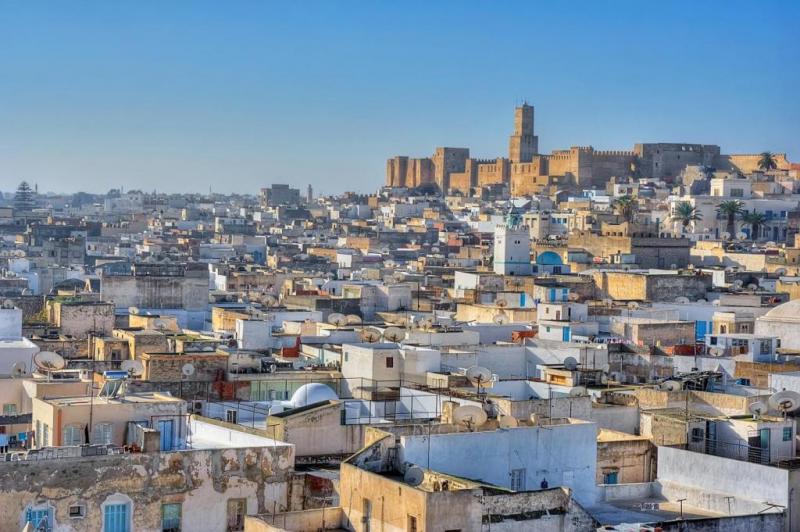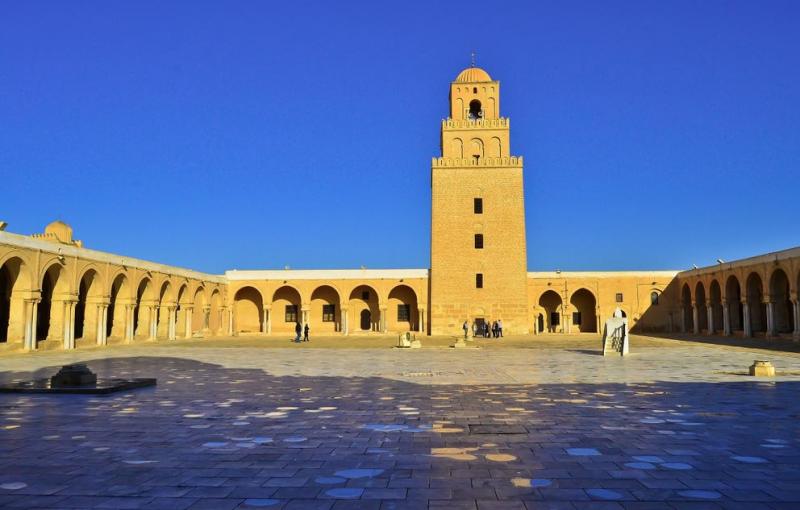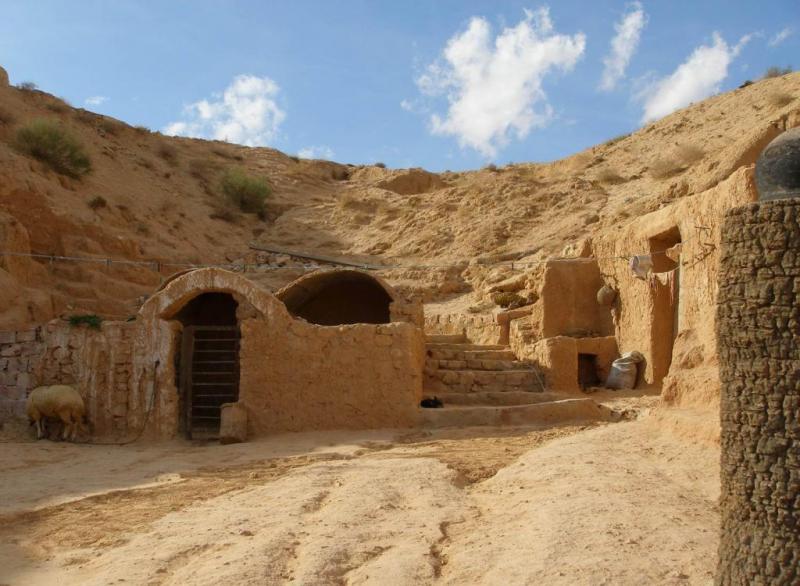What to see in Tunisia for 3 days
March 20 Tunisia celebrates Independence Day. Today we propose to move away from the paradigm of “beach-bar market with souvenirs” and look at the rich heritage of this country. Our route through all the main attractions will only take three days.
Tourist industry ranks second in the national income of Tunisia, so the tourist infrastructure here is very well-developed. In order to visit the country, not necessarily to get a visa – just stamp on the border. If you plan to attend, and even neighboring countries – Algeria and Libya – a tourist visa you will draw in a few days.
Stay on arrival we offer in the capital, Tunis. We liked the hotel Maison Blanche Hotel, which not only has a fairly high rating, relatively low prices for accommodation and is located in the city center, but also from her first close to the sights.
Day One
The first landmark is located just 17 kilometers east of the hotel. Necessary to move along the highway N9, then turn on the N10 and get straight to the …
Carthage
It is difficult to imagine that the picturesque ruins, hidden between the buildings of modern Tunisia, were once a great nation, able to compete with the all-powerful Roman Empire. Legend has it that the famous Carthage, the kingdom of traders and famous sailors, was created by an ingenious Phoenician princess Elissa. Scrounge from Bishop Namibia piece of land the size of an ox hide, ancient political refugee fleeing from pretenders to the throne of the king of Tyre, was able to grab an enviable put, cutting the skin on the rope and tied them together. Two terrible Punic wars with Rome survived Mediterranean state, but did not survive the onslaught of the third Carthage, burned down and strewn with salt, if you believe the legend, it turns out, was the first victim of ecocide in history. Get to survivors century remains of ancient attractions, the most interesting of which are the altar of Baal, the amphitheater and baths Anthony, in the absence of a driver’s license can be by train or taxi from the capital.
Carthage
Next landmark is located on the Mediterranean coast. To go before it will have about a half hour. Highway A1 leave on extending along the coast road and drive south until until you get to Sousse.
Sousse
There are countless mysteries and historical monuments that will delight travelers, wandering the world in search of ancient ruins. With the high tower of the old Ribat – monastery built during the Aghlabids to protect against Christians – a magnificent view of the medieval part of the city, the medina. In the labyrinth of its ancient catacombs of many interesting specimens of ancient architecture stored unique heritage dawn of Christianity underground burial 2-4 centuries BC, and the Archaeological Museum, erected in the image of Roman villas, hidden marvelous mosaic gallery.
You can return here after sightseeing. Indeed, in Sousse, Tunisia’s most cheerful resort, there is a lesson to all to taste. Those who want to relax in complete idleness can lie on the best beaches in Tunisia and dive into the warm waters of the Mediterranean. Colorful ethnic costumes and souvenirs await lovers of inexpensive shopping on four floors supermarket Soula Center and noisy series of local markets, and work for the kids Botanical Gardens, an amusement park and water park Hannibal Park in nearby Port el Kantaoui. On the streets of Sousse fun never stops: in the evenings is not silent on the popular music of the disco and Bora-Bora buzzing fiery carnival festival “Aussies”.
But we go back to the sights, so in the morning we move further along the coast to the south and in half an hour we get to Monastir.
Second Day
Monastir
In the era of Roman rule and no one could assume that an ordinary town Ruspina, based on the site of the Phoenician Rus Penna someday turn into a popular tourist center. First, based here garrison Caesar, and in the 8th century Ribat fortress was built Hartema, serves to protect from the sea. The heyday of Monastir, named in honor of Princess Mona, came at the beginning of the second millennium. At this time, the city, surpassing Kairouan became the religious capital of the African nation. So was honorable service in Monastir, which was considered: three days of conscription in the city Medina guarantee a place in paradise. Much here recalls milestones of history: a large mosque, built in the 9th century, and powerful fortifications, decorated with exquisite carvings and gold ornaments mausoleum of the first Tunisian President Habib Bourguiba and cemetery Kubba, a place where only awarded honorary citizens. Monastir also offers active in the fields of golf clubs and riding school at the ranch Skanes, a huge selection of seafood in small restaurants picturesque port sea yachts and relaxing thalassotherapy centers.
Monastir
Kairouan
According to the old legend, in 670, as only a great governor Okba Ibn Nafi put his foot on the land of Ifriqiya, from the earth, as if by magic, burst water flows, pushing gold to the surface vessel lost in the holy Mecca. Since then, the residence of the governor of the Muslim Umayyad Africa became a stronghold of Islamic culture, and sevenfold pilgrimage in Kairouan replaced the hajj to Mecca. Tall minarets 85 Muslim temples scratch sky over the city. One of them, the Great Mosque, named after the founder of Kairouan, the fourth is considered the gateway to the Islamic paradise. Worldwide, there are no analogues huge prayer hall, crowned four hundred Carthaginian columns, three-tiered minaret, built in the image of the Alexandria lighthouse, the oldest on the planet Minbar created from Baghdad teak and old mihrab, paneled in white marble and painted with gold luster. For guests who have decided to explore the mosque barber shop, where you store the hairs from the beard of Muhammad, a wonderful source of Bir Barut, unique pools and Aghlabids Carpet Palace, the preferential offer.
Kairouan
Since the next point of interest is quite far to the south, we suggest you stay in Kayrune and continue the journey the next day.
Day Three
The next point of the trip is four hours south of Kayruna.
Cave city of Matmata
Slowly, as the sand, but equally inevitably, funneling days, and with them and the world is changing. Where before there were wooden shacks, grow skyscrapers and luxury hotels, and horses and mules replace cars and motorcycles. Just above the ancient town of Matmata where already half millennium tribe inhabits Berbers surrenders omnipotent time. Nobody knows how it’s grown in the desert cave settlement and where were troglodytes (so were called Matmata residents who moved into the ground). Someone even claims that they – descendants of the Atlanteans who fled to the lost continent of disaster. Whatever it was, between the hills came a whole village, numbering over seven hundred cave dwellings. In multistory wells, reaching a depth of 10 meters, and have kitchens and balconies, and bedrooms, and even all kinds of shops. Berbers assure that live in unusual houses it is convenient because you can do without air conditioning and without a fireplace. Guests are always welcome: they will traditional soup “shorba” couscous with meat and amazing coffee. For their hospitality Matmata residents do not require a fee, but anyone who relished tour can leave Dinar in a bowl at the entrance.







